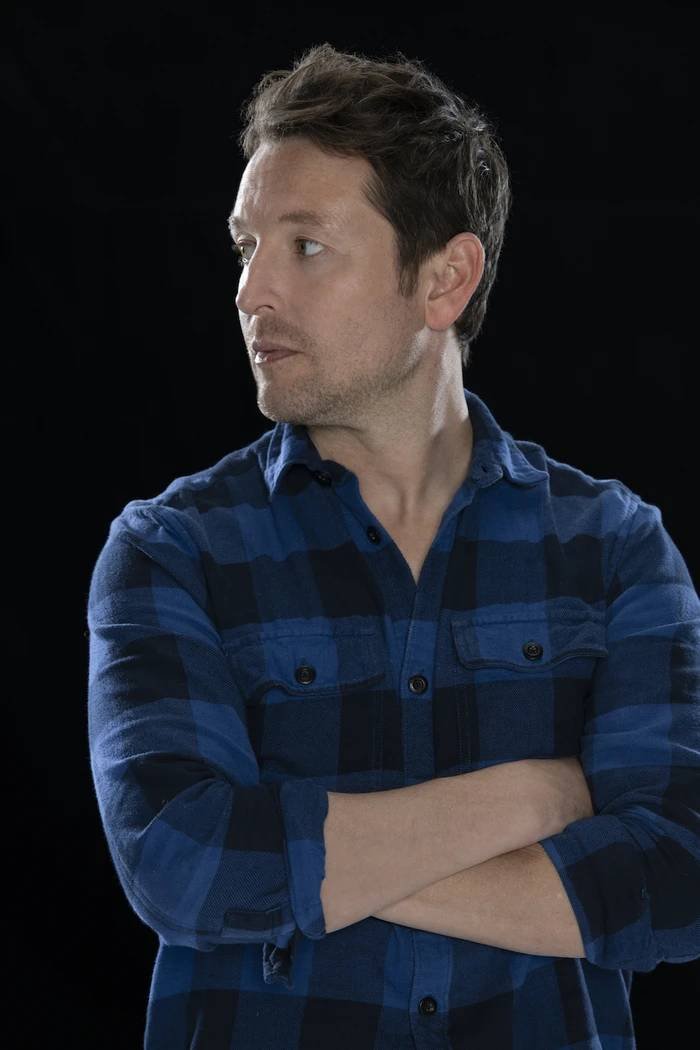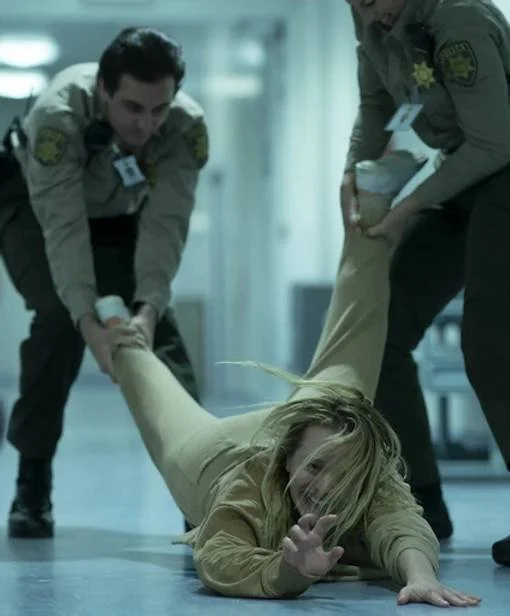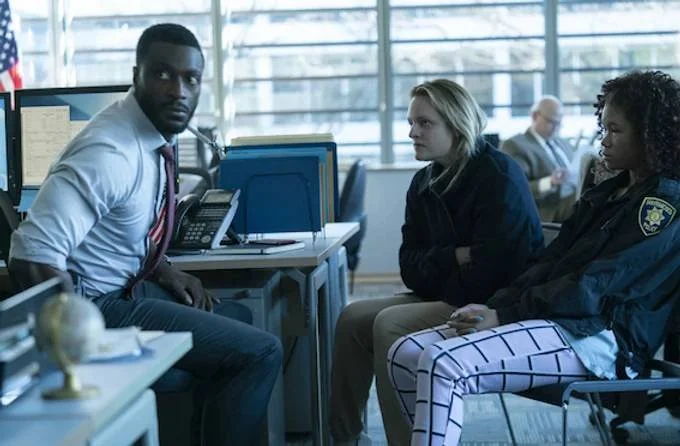The Invisible Man’s Leigh Whannell
The Invisible Man’s Leigh Whannell
Melbourne-born writer and director Leigh Whannell talks about why he’s a massive fan of Elisabeth Moss, the resurgence of horror movies and why we’re headed into a golden age for the genre, writes Andrea Beattie
The Invisible Man‘s Leigh Whannell reckons it’s a great time to be a horror fan – and we couldn’t agree more.
Melbourne-born Whannell, who wrote the screenplay, directed and executive produced new release The Invisible Man, has given us a modern take on Universal’s classic monster movie, based on the 1897 novel by sci-fi genius H.G. Wells.
And it’s magnificent.
There’s twists and turns galore, compelling dialogue, outstanding performances from the entire cast headed up by the uncompromising Elisabeth Moss and incredible visual effects by Aussie studio Cutting Edge.
But despite such a solid result, Whannell admits he wasn’t burning to make the film when first presented with the idea.
Writer and director Leigh Whannell
“I know about the Invisible Man. But it was not something I was thinking of (making),” he says.
“It was suggested to me by Blumhouse and Universal. They incepted me with this idea and one of the first thoughts I had, was that the Invisible Man is more scary when he’s not the central character.
“For me, it was much more scary, (that) idea of an invisible man coming after you.”
Hiding in plain sight
With this in mind, Whannell plays to those fears in his new film, creating an atmosphere of foreboding terror, refusing to reveal the monster hiding in plain sight.
“That’s the whole premise of this movie, isn’t it … ” Whannell muses.
“When you think about the different super powers of the iconic horror villains, there’s always some visual iconography that you can instantly conjure up in your mind.
“Well, the Invisible Man’s kinda different because the absence of him is how he (evokes) fear.
“That meant the whole film was about empty corridors and empty rooms, and keeping the audience wondering where he is. Is he in the frame, is he in the room right now?
“I realised I could play games with the audience, needle them. It’s almost my fiendish glee at torturing an audience.”
Whannell says making a modern version of the classic was top of his priorities list when writing the screenplay.
“I wanted to really modernise this character and make it as if the novel The Invisible Man was written last year.
“Not treat it like this old property and have too much allegiance to the gothic lineage of this character,” he says.
“I wanted to just treat it like it is a totally new thing; no one’s even aware of his character.
“So you kinda have to Jedi mindfreak yourself into thinking no one’s ever done it before.
“I felt a lot of freedom to take it down the path I wanted.”
Elisabeth Moss is tormented by a presence only she can feel.
Moss brings character to life
Lead actor Moss is the shining light in a role that endears her further to fans of the horror genre.
Moss plays Cecilia Kass, a bright architect, trapped in a controlling and abusive relationship with wealthy and brilliant scientist Adrian Griffin.
When she finally summons the courage to escape, a living nightmare unfolds.
Adrian commits suicide and leaves her a generous portion of his vast fortune.
But like everything in their relationship, it’s conditional. To collect the cash, Cecilia must not commit a crime or be ruled mentally incompetent.
Suspecting Adrian’s death is a hoax, Cecilia’s sanity unravels as she desperately tries to prove she’s being tormented by someone that nobody can see.
Whannell says he couldn’t imagine anyone but Moss as Cecilia.
“The whole movie is a one-woman show; (Elisabeth is) in every scene but two,” he explains.
“We only had two days when she wasn’t on set.
“And oftentimes, she’s alone having a conversation with a doorway and to do that, you need an actress like Elisabeth.”
Whannell directs Moss on set near Gerringong, NSW.
Tackling some tough themes
Taking on themes such as domestic abuse and violence against women wasn’t deliberate, but a side effect of presenting the idea of monsters hiding in plain sight.
“During the (writing) process, I started to realise that the film tied really neatly into the idea of an abusive relationship; somebody who has been gaslit and tortured emotionally.
“The (idea of the) Invisible Man is a perfect metaphor for someone who’s not being believed.
“So, I just kind of let the film go, and let those themes (of domestic abuse), blend in unconsciously.
“And when I talked to Lissie, we didn’t even say it out loud, but we both knew what we were trying to do.”
Darkness is usually a horror director’s best friend, but again, Whannell wanted to try something different with The Invisible Man.
“(Cinematographer) Stefan Duscio and I had a lot of fun kind of figuring out how to break the rules in our own tiny ways,” Whannell says.
“Most horror films, especially the ones I’ve been involved in, they’re so dark.
“You’re always turning the lights off. Like, ‘how dark can we get this? Can we light the whole scene, you know, with a candle’,” he laughs.
“I wanted to turn the lights on because this is not a monster that needs to hide in the shadows.
“The whole point of the Invisible Man is that he could be standing right there, he doesn’t need darkness. And so it felt counterintuitive to turn the lights off.
“There were moments on set where we were like, ‘there’s nothing in the frame, we’re literally watching paint dry’.
“And you have doubts, like ‘maybe we should put something in the frame?’, but it was I just had a feeling that it would work.”
Moss was pushed to her limits filing the horror-thriller.
Letting the audience do the work
Whannell said he liked the idea of getting the audience to fill in the blanks.
“Audiences today are so cine-literate,” he says.
“You guys have seen so many movies that you know what’s happening.
“So, on a subconscious level if the camera pans over here, you know, there’s something there.
“Otherwise, why would the camera do it? And I knew that it was like I was relying on the audience to fill in that gap for me.”
Any horror fan worth their salt knows the genre has come a long way since the badly-scripted, brilliantly cheesy and blood-spattered films of the 80s.
Horror is now attracting actors of the calibre of Moss, Toni Collette, Vera Farmiga, Octavia Spencer, Emily Blunt … the list goes on.
“I think the reason it’s attracting bigger actors like Elisabeth, is that the quality is getting better, it’s no longer a dirty word,” he laughs.
“I think that filmmakers have seen an opportunity with horror to experiment.
“There’s no other genre where you can be so experimental, and yet so mainstream at the same time.
“There’s no other genre where you’re allowed to have an unhappy ending.
“If you imagine an action hero where James Bond gets to the end and then dies and then roll credits, like, they wouldn’t let it pass, but with a horror movie, you’re allowed to do that.
“It’s like the punk of movie genres, it’s a rule-breaking genre.”
The Invisible Man also stars Aldis Hodge (Straight Outta Compton) and Storm Reid (Euphoria).
Appealing to a wider audience
He says horror filmmakers are also now starting to delve deeper into storylines to reach a much wider audience.
“Filmmakers who’ve grown up on horror throughout the ’80s have started to realise that they can use the structure and the box of horror to tell wider stories with a bigger canvas, getting at deeper issues, more meaningful,” he says.
“It’s an exciting time to be a horror fan because you know that the Hereditarys and the Get Outs, and all these movies are going to inspire a whole new generation.
“For this movie, I was really inspired by ’90s thrillers that I loved like Misery, The Hand That Rocks the Cradle, Fatal Attraction; it was that whole era of adult thrillers that Hollywood used to make. Dead Calm was one for me that was great. There’s so much menace in that movie and it’s a three-hander on a boat. But it’s a great film.
“Every now and again someone like David Fincher will make an adult thriller, like Gone Girl, but it does seem to be a bit of a forgotten genre in the age of big CGI blockbusters.
“(With The Invisible Man) I was really keen to get back to that spirit of the contained domestic thriller and have it be a character piece, you know, a chamber piece.”
Produced by horror master Jason Blum, The Invisible Man is in cinemas on February 27.
It also stars Harriet Dyer (The InBetween), Aldis Hodge (Straight Outta Compton) and Storm Reid (Euphoria).




